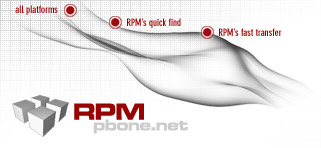Description :
This module provide a convenient way to create directories of arbitrary
depth and to delete an entire directory subtree from the filesystem.
The following functions are provided:
* make_path( $dir1, $dir2, .... )
* make_path( $dir1, $dir2, ...., \\%opts )
The \'make_path\' function creates the given directories if they don\'t
exists before, much like the Unix command \'mkdir -p\'.
The function accepts a list of directories to be created. Its behaviour
may be tuned by an optional hashref appearing as the last parameter on
the call.
The function returns the list of directories actually created during the
call; in scalar context the number of directories created.
The following keys are recognised in the option hash:
* mode => $num
The numeric permissions mode to apply to each created directory
(defaults to 0777), to be modified by the current \'umask\'. If the
directory already exists (and thus does not need to be created), the
permissions will not be modified.
\'mask\' is recognised as an alias for this parameter.
* verbose => $bool
If present, will cause \'make_path\' to print the name of each directory
as it is created. By default nothing is printed.
* error => \\$err
If present, it should be a reference to a scalar. This scalar will be
made to reference an array, which will be used to store any errors that
are encountered. See the the /\"ERROR HANDLING\" manpage section for more
information.
If this parameter is not used, certain error conditions may raise a
fatal error that will cause the program will halt, unless trapped in an
\'eval\' block.
* owner => $owner
* user => $owner
* uid => $owner
If present, will cause any created directory to be owned by \'$owner\'.
If the value is numeric, it will be interpreted as a uid, otherwise as
username is assumed. An error will be issued if the username cannot be
mapped to a uid, or the uid does not exist, or the process lacks the
privileges to change ownership.
Ownwership of directories that already exist will not be changed.
\'user\' and \'uid\' are aliases of \'owner\'.
* group => $group
If present, will cause any created directory to be owned by the group
\'$group\'. If the value is numeric, it will be interpreted as a gid,
otherwise as group name is assumed. An error will be issued if the
group name cannot be mapped to a gid, or the gid does not exist, or the
process lacks the privileges to change group ownership.
Group ownwership of directories that already exist will not be changed.
make_path \'/var/tmp/webcache\', {owner=>\'nobody\', group=>\'nogroup\'};
* mkpath( $dir )
* mkpath( $dir, $verbose, $mode )
* mkpath( [$dir1, $dir2,...], $verbose, $mode )
* mkpath( $dir1, $dir2,..., \\%opt )
The mkpath() function provide the legacy interface of make_path() with a
different interpretation of the arguments passed. The behaviour and
return value of the function is otherwise identical to make_path().
* remove_tree( $dir1, $dir2, .... )
* remove_tree( $dir1, $dir2, ...., \\%opts )
The \'remove_tree\' function deletes the given directories and any files
and subdirectories they might contain, much like the Unix command \'rm -r\'
or \'del /s\' on Windows.
The function accepts a list of directories to be removed. Its behaviour
may be tuned by an optional hashref appearing as the last parameter on
the call.
The functions returns the number of files successfully deleted.
The following keys are recognised in the option hash:
* verbose => $bool
If present, will cause \'remove_tree\' to print the name of each file as
it is unlinked. By default nothing is printed.
* safe => $bool
When set to a true value, will cause \'remove_tree\' to skip the files
for which the process lacks the required privileges needed to delete
files, such as delete privileges on VMS. In other words, the code will
make no attempt to alter file permissions. Thus, if the process is
interrupted, no filesystem object will be left in a more permissive
mode.
* keep_root => $bool
When set to a true value, will cause all files and subdirectories to be
removed, except the initially specified directories. This comes in
handy when cleaning out an application\'s scratch directory.
remove_tree( \'/tmp\', {keep_root => 1} );
* result => \\$res
If present, it should be a reference to a scalar. This scalar will be
made to reference an array, which will be used to store all files and
directories unlinked during the call. If nothing is unlinked, the array
will be empty.
remove_tree( \'/tmp\', {result => \\my $list} );
print \"unlinked $_\
\" for AATT$list;
This is a useful alternative to the \'verbose\' key.
* error => \\$err
If present, it should be a reference to a scalar. This scalar will be
made to reference an array, which will be used to store any errors that
are encountered. See the the /\"ERROR HANDLING\" manpage section for more
information.
Removing things is a much more dangerous proposition than creating
things. As such, there are certain conditions that \'remove_tree\' may
encounter that are so dangerous that the only sane action left is to
kill the program.
Use \'error\' to trap all that is reasonable (problems with permissions
and the like), and let it die if things get out of hand. This is the
safest course of action.
* rmtree( $dir )
* rmtree( $dir, $verbose, $safe )
* rmtree( [$dir1, $dir2,...], $verbose, $safe )
* rmtree( $dir1, $dir2,..., \\%opt )
The rmtree() function provide the legacy interface of remove_tree() with
a different interpretation of the arguments passed. The behaviour and
return value of the function is otherwise identical to remove_tree().
|
